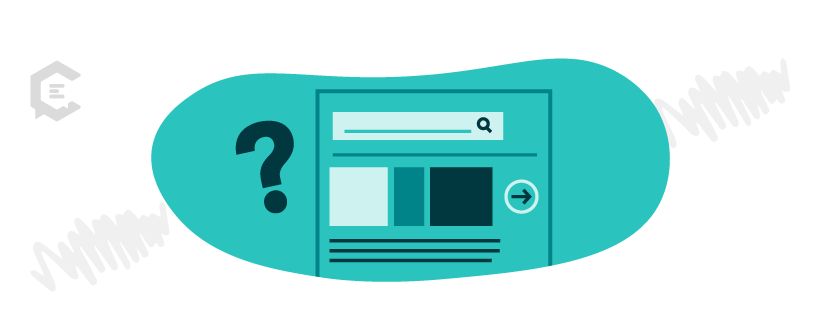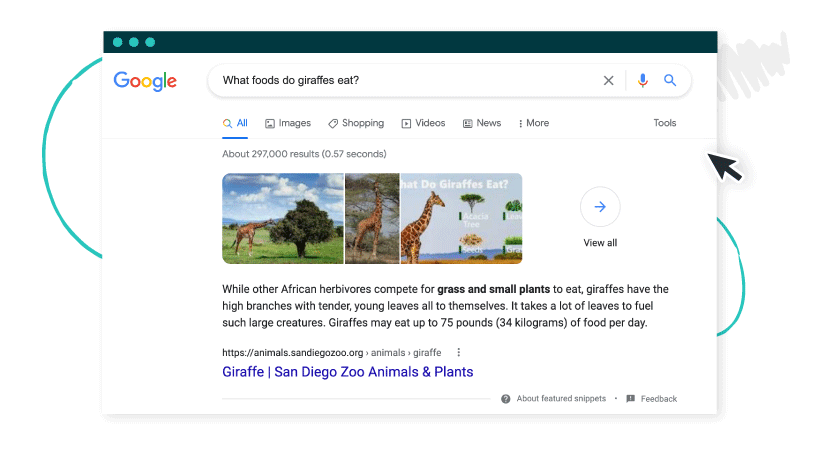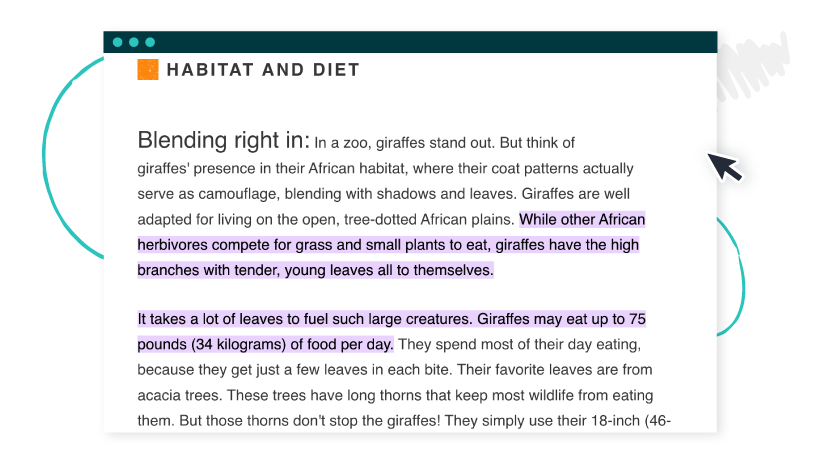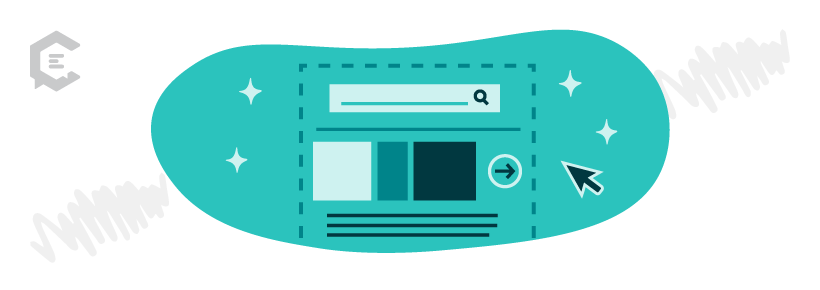You’ve seen it before — that top spot on the search engine results page with brief answers to commonly asked questions about a topic. Webmasters sometimes call this coveted spot a “zero-click” result or an “answer box,” but Google uses the term featured snippets.
Here’s everything you need to know to understand how featured snippets work and see your content highlighted in Google’s search results.

What is a featured snippet?
A featured snippet is a summary of an answer to a user’s question, positioned at the top of the search results. Google pulls these snippets from websites that provide the best answers to the user’s queries.
Google displays featured snippets that give users the information they’re looking for as quickly and efficiently as possible.
Featured snippets can help your website earn more clicks and help you establish yourself as an authority on your subject matter. How many more clicks? According to one recent study, featured snippets account for 35.1% of all clicks.
There are three types of featured snippets:
- Paragraphs
- Lists
- Tables
Google decides the type of snippet to display based on the content it finds on a website. Paragraphs are the most popular, making up about 70% of featured snippets.
Featured snippets example
Here’s an example of a featured snippet in Google.
Here’s the full text you’ll find after clicking the link with the snippet highlighted:
You’ll notice that Google created the snippet using text embedded across two paragraphs.
As you can see, you don’t have to use any special code to create rich snippets. However, there are some ways to structure your page to make it more likely that Google will feature your content. We’ll dive into those in a moment.
What do “position Zero” and “Zero click results” mean?
Position Zero is another name for featured snippets. It gets its nickname from its literal position on the search results page — above the first organic result and below any paid ads.
Zero Click also refers to the fact that users don’t have to click on anything else to get their answer; they can find everything they need right in the featured snippet.
How Google chooses whose snippets to feature
Google primarily determines indexing and ranking by crawling the web with bots. While Google combs your site to index and ranks its content, the algorithm also gauges whether your content might make an ideal featured snippet to highlight for a search query.
Google displays featured snippets on a search results page when it finds information that will help people quickly discover what they’re seeking — especially those using mobile or voice search who want quick answers. If your content is well-written, concise, and authoritative, it stands a good chance of appearing as a featured snippet.
However, there are some actions you can take to ensure that Google can find potential snippets on your page easily.
How do you create a Google search snippet?
The best way to get your content chosen as a featured snippet is to write good content that answers commonly asked questions and follows a structured outline format using headings and subheadings.
Write solid content
Google is more likely to highlight sections of your content in its search results if your content is well-written and optimized for SEO. The search engine also prioritizes websites it considers good resources — sites with lots of related content, a low bounce rate, and plenty of inbound links.
As you can see in the giraffe example above, writing an authoritative and well-regarded website is sometimes all it takes to be chosen as a zero-click search result. If your content isn’t clearly written and well-researched, the other tips on this list won’t help.
Answer frequently asked questions
To seek out featured snippet opportunities, type the keywords you’d like to rank for into Google. Notice if you see any autocomplete suggestions in the search box — those represent popular searches.
You’ll also see some commonly asked questions at the bottom of your search result page.
At the top of the page, you’ll see any snippets that Google has already chosen. If you think you can offer a better answer than the existing snippets, you might want to try.
You can also use Google Search Console to find out which queries are already driving traffic to your site. Just go to “Search Traffic” and then “Search Analytics.”
Incorporate the frequently asked questions into your content, or add an FAQ section to the bottom of the page and answer three or four questions on each page of your content. See the bottom of this page for an example of an FAQ section.
Use headings for the questions
Headings and subheadings on web pages use tags like H1 (the most prominent header, used for titles), H2 (for topics), and H3 (for subtopics).
But you don’t need to know how to write HTML code to create your structure. WordPress and other site-building tools offer headings as one of their styling options. Just make sure to style your text using the preprogrammed header options instead of using bold text or specifying a text size manually.
Write concisely
Google tends to grab snippets made up of 2-3 short sentences. Make it easy for them by creating short sentences and paragraphs. About 40-50 words are optimal.
Include an image
Google favors snippets with an image. Looking at the giraffe example above, you’ll notice that Google chose some nearby images to feature alongside the text. Including an image near your intended snippet text, with an alt image tag that includes your keywords may improve your chances.
Offer definitions, steps, or recipes
Google often offers snippets that feature definitions, simple step-by-step instructions, or recipes.
- Definitions: Use language like “What is _____” as your topic heading.
- Instructions: Write out steps very briefly as an ordered (numbered) list.
- Recipes: Use “Recipe” as your heading, then follow a standard format of listing ingredients and writing out steps.
Optimize your high-ranking pages
If you have any pages that already rank high on Google, you are in an excellent position to be considered for a featured snippet. Try adding an H2 header that says “Frequently Asked Questions” at the bottom of your page, and answer 3 or 4 questions. Use an H3 header for each question, then answer the question in 2 to 3 brief sentences.
Take it further with a featured snippet tool
Schema refers to structured data that encodes information in ways Google recognizes. You don’t need to use structured data to create featured snippets — the featured snippet schema is simple, and Google can extrapolate it using your headers and text.
But you can use structured data to create rich content like how-to instructions, reviews, recipes, and product descriptions. Google often displays this kind of structured content on its search pages in full, similar to the “answer box” appearance of featured snippets. And if you want a tool to organize your FAQ lists for zero-click results, there is a schema to support it.
SEO tools like Yoast for WordPress have built-in schema features you may want to try.
Find your snippets on Google
You can use Google’s search console to see if any of your content is appearing as featured snippets. Enter your URL and click “Search.” If there are any featured snippets associated with your site, they will be listed.
FAQs about featured snippets
How do I make content appear in a featured snippet?
Make sure your page is well-optimized for the keyword you’re targeting. Write short paragraphs and sentences, organize them using popular questions as headings, and answer the questions completely using simple language.
How do I optimize a Google featured snippet?
Answer questions as thoroughly as you can, using 2-3 sentences and 40-50 words for your answer. Use headers to structure your writing, and make sure your keywords feature prominently on the page.
What are featured snippets and how do you get them?
Featured snippets are the short answers to questions that Google offers at the top of its search results. Your content can be featured as a snippet if you provide clear, brief answers to popular questions on your website.
What are the Rank Zero Results in Google?
Rank Zero refers to the featured snippets that appear at the top of Google’s search results, above the first position (but below ads). The term Rank Zero refers to the fact that these “answer boxes” appear before the #1 search result.
Help Google feature your website
Google can pull featured snippets from any site that it indexes. But if you want to increase your chances of appearing at the top of the results and drawing those extra clicks to your site, you can follow the advice in this post.
First, research frequently-asked questions and offer concise 40-50 word answers. Make sure your pages use H2 and H3 tags to organize your information and include images that highlight your information. You may even want to incorporate an FAQ list, like the one you see above.








